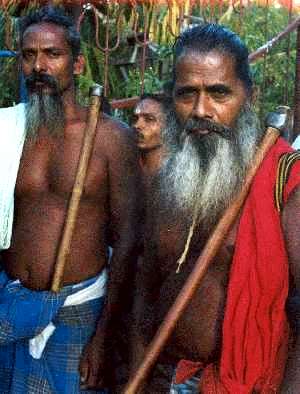Post-Independence developments  | Wanniyal-aetto elders | |
|
The Sri Lanka government's concern for its indigenous people dates back to the early 1950s when a Veddha Welfare Committee was created as part of a Backward Communities Development Board. During this period, the prevalent philosophy of development regarded the disappearance of indigenous and tribal peoples as distinct societies as an irreversible and desirable process. Seen as backward and irrational, they were regarded as obstacles to national development and growth. Needless to say, such indigenous and tribal peoples as the Wanniyalaeto were not consulted for their views on the subject. In recent years, however, the way of viewing the relationship between culture and development has undergone changes. Even during the 1960s and 70s, culture was considered to be irrelevant to the development process and much of the blame for failed development projects was attributed to resistance to modernization from affected traditional communities. Later, culture came to be regarded as inviolable and, as such, development was to be discouraged and enforced isolation was advocated. But this strategy also is inadequate to enable endangered cultures to cope with social change. More recently, culture has come to be regarded both as a goal and as a framework within which to promote other development goals.6 This means that it is up to the affected people to decide how and to what extent to retain their cultural values and ways of life, and that any development initiative should bear these values in mind. Like all societies, indigenous cultures are subject to change, too.
|

